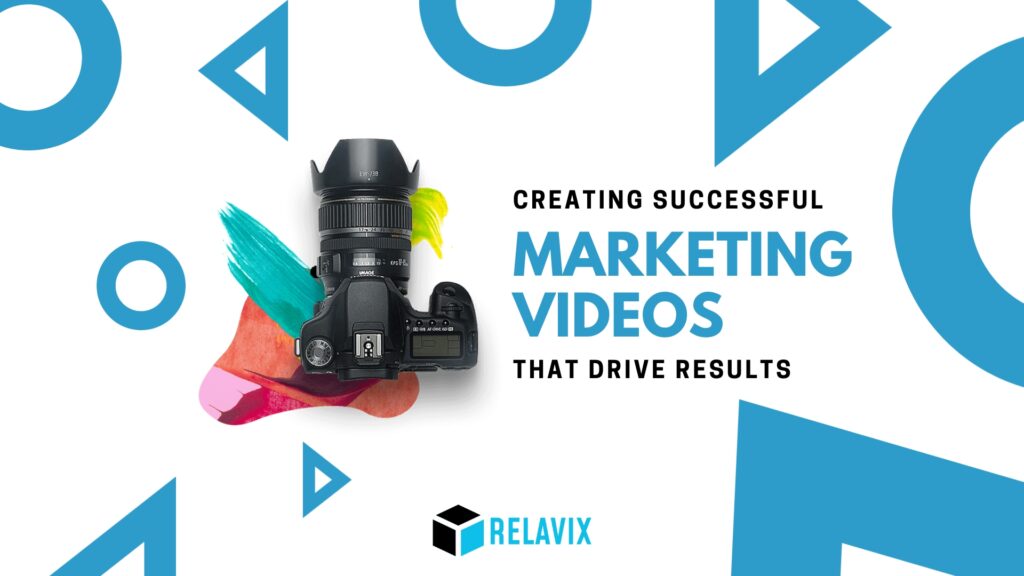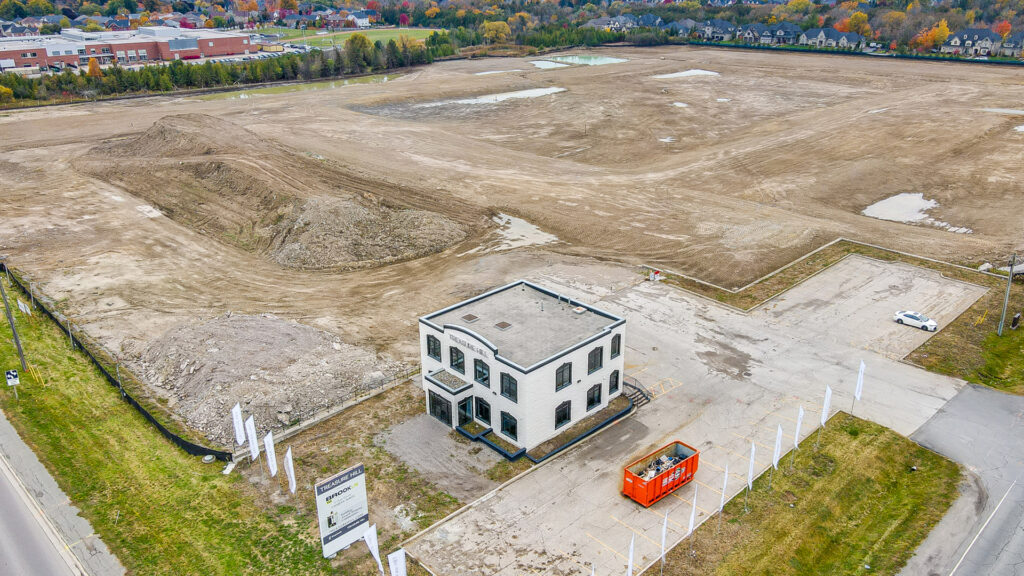
5 Stages of Creating Successful Marketing Videos That Drive Results
Updated: December 1st, 2023
Introduction
This article provides an overview of a comprehensive 42-page guide titled Creating Successful Marketing Videos That Drive Results. For the complete guide, you can download it by visiting: https://relavix.com/free-video-guide/
At RELAVIX, our focus is on producing media for the real estate industry, catering to agents, brokerages, builders, and developers. While specializing in real estate, we’ve also successfully created marketing videos for diverse industries. Our experience has highlighted that irrespective of the industry, effective marketing videos follow a five-stage process:
- Video Strategy
- Video Pre-Production
- Video Production
- Video Post-Production
- Video Marketing
Creating a successful marketing video goes beyond aesthetics; it’s about achieving tangible results like increased sales, lead generation, or heightened awareness. Any video that has proven successful and delivered real results has navigated through these five essential stages.
1) Video Strategy
The strategy of a video is the foundational and arguably the most important stage in producing a video.
Strategy isn’t only about the concept, script, or storyboard. It’s about the understanding the purpose of the video. Developing an effective strategy will help you make a video that actually has an impact on your business.
Guidelines for video strategy:
- Understand the purpose behind creating your video.
- Determine the biggest problem you’re looking to solve through the video.
- Know your audience and target market.
- Choose the two or three most important facts you want to convey through the video.
- Decide which call-to-action will be most effective for your video.
- Decide the emotional impact you want to leave on your audience.
2) Video Pre-Production
This is the stage where you need to visualize your video.
Visualizing is a very powerful tool that can be used to your advantage to create extraordinary marketing videos.
Video is an organic and creative method of communication and every project is different. There’s no straight forward way of producing a video.
Guidelines for video pre-production:
- Stay away from cliché concepts. Authenticity can be sensed by your viewers. Your brand is unique and your video should be too.
- Don’t make your video too informational. Add depth through storytelling when developing your script and storyboard.
- Choose good representatives. Their voice and body language play in important role in conveying your message.
- Choose scenic locations and ensure you have permission to shoot there. Try to get a release form.
- You can never plan too much for a video. Make detailed notes, have backups, and schedule everything.
3) Video Production
This is the stage where the video shoot takes place.
It’s shoot day. You’re on location and ready to record. Does it just take a camera and hitting the record button to make the video?
Well, you can make A VIDEO by just hitting the record button on a camera. But we aren’t here to talk about just any video. We want to create extraordinary high production value videos.
Guidelines for video production:
- Get a camera that can record at least a 1920 x 1080 resolution and use a frame rate that fits your video style.
- Sound is half your video. Make sure to capture high quality audio from a good mic even if it is your phone. It makes a world of difference.
- Remember to have lots of available light whether its natural or artificial. It is what will make your visuals look extraordinary.
- Stay away from shaky footage. Use a gimbal or stabilizer, tripod, flat surface or at least stay still while holding the camera in your hands to get smooth shots.
- Plan your shoot, capture lots of footage, and be ready to improvise.
4) Video Post-Production
This is the stage where it’s time to edit and put your video together.
It’s a good practice to make use of the script and storyboard to assist you while you edit. This way you can arrange your footage strategically and effectively.
Remember when we said visualizing is a powerful tool? It’s time to turn that visualization into reality by putting all the variables together.
Editing takes a lot of patience and hard work. You need to be willing to put in hours at a time to edit your video.
Guidelines for post-production:
- Utilize the script and storyboard to help you edit.
- Watch all your raw footage first and organize it by naming the files for reference.
- Arrange and match all your footage and audio in a sequence and ensure you use copyright-free sound.
- Spend time perfecting small details and edit your video and audio in synchronization.
- Get constructive feedback and apply it. Do not be afraid to seek help from professionals.
- Render your video with platform specific settings and be patient and persistent in this time consuming stage of post-production.
5) Video Marketing
It’s time to share your video with your audience.
A successful video is incomplete without marketing. This is where you publish your video through the most effective channels and platforms to reach out to your target market.
Marketing is about distribution and making sure your video reaches people. You could have the most creative and high production value video but if no one knows it exists, it won’t have any meaningful impact on your business.
There are two ways to market your video. The no-budget method and the investment method.
The no-budget method: If you don’t have a budget for marketing, there are free ways to reach your audience. I have compiled five popular ways to distribute your video for free:
- Post the video on all your socials and share.
- Post the video on your website and landing page.
- Include your video in your email campaigns.
- Present your video at events.
- Share your video in online communities such as blogs, groups, and forums.
It may seem difficult to generate buzz around your video if you don’t have a marketing budget. However, if you apply the methods I mentioned above consistently you will eventually see results. Be patient and persistent.
The investment method: Investing into advertising is the most lucrative way to market your video. The top three platforms for online video advertising are YouTube and Facebook and Instagram. To keep this article short, here are some useful resources for each one:
View YouTube’s free resources that can help you learn more about how to effectively advertise on the platform: https://www.youtube.com/ads/resources/
View Facebook’s free online courses that teach you about digital marketing on their platform: https://www.facebook.com/business/learn/
Guidelines for video marketing:
- Distribution of your video is an important ingredient in the success of your project.
- If you don’t have a marketing budget, you can share your video on socials and other channels for free.
- If you have a marketing budget, advertising on platforms such as YouTube, Facebook, and Instagram can be very effective in distributing your video.
- A/B test different variables in your ad campaigns to see which ones yield the best results.
- Getting your audience’s attention within the first few seconds is critical.
- Get inspiration through successful ads and implement the techniques and strategies used by bigger companies.
Final Thoughts
Video is an investment, not a cost.
Spending on the strategy, pre-production, production, post-production, and marketing of a video shouldn’t be seen as a cost but rather as an investment. The purpose of producing a high quality video is to amaze your target market and drive action in order to grow your business. The return-on-investment will be far greater than your initial investment.
There are a countless number of statistics that prove the power of video marketing in today’s accelerating digital world.
Video demands not only a financial investment but also an investment of time, creativity, critical thinking, and perseverance. I trust you’ve gained valuable insights from this guide and wish you success in all your video projects. For those interested in delving into the complete 42-page guide, it is available for download here: https://relavix.com/free-video-guide/
If you’re an agent, brokerage, developer, or a homebuilder looking for real estate media services, reach out to us at connect@relavix.com or go to www.relavix.com to learn more about our services.
You Might Also Like
5 Stages of Creating Successful Marketing Videos That Drive Results
This article provides an overview of a comprehensive 42-page guide titled Creating Successful Marketing Videos That Drive Results.
6 Tips For Creating Viral Real Estate Property Reels in 2023
Social media reels stand out as one of the most impactful methods for marketing real estate properties and communities. However,…



